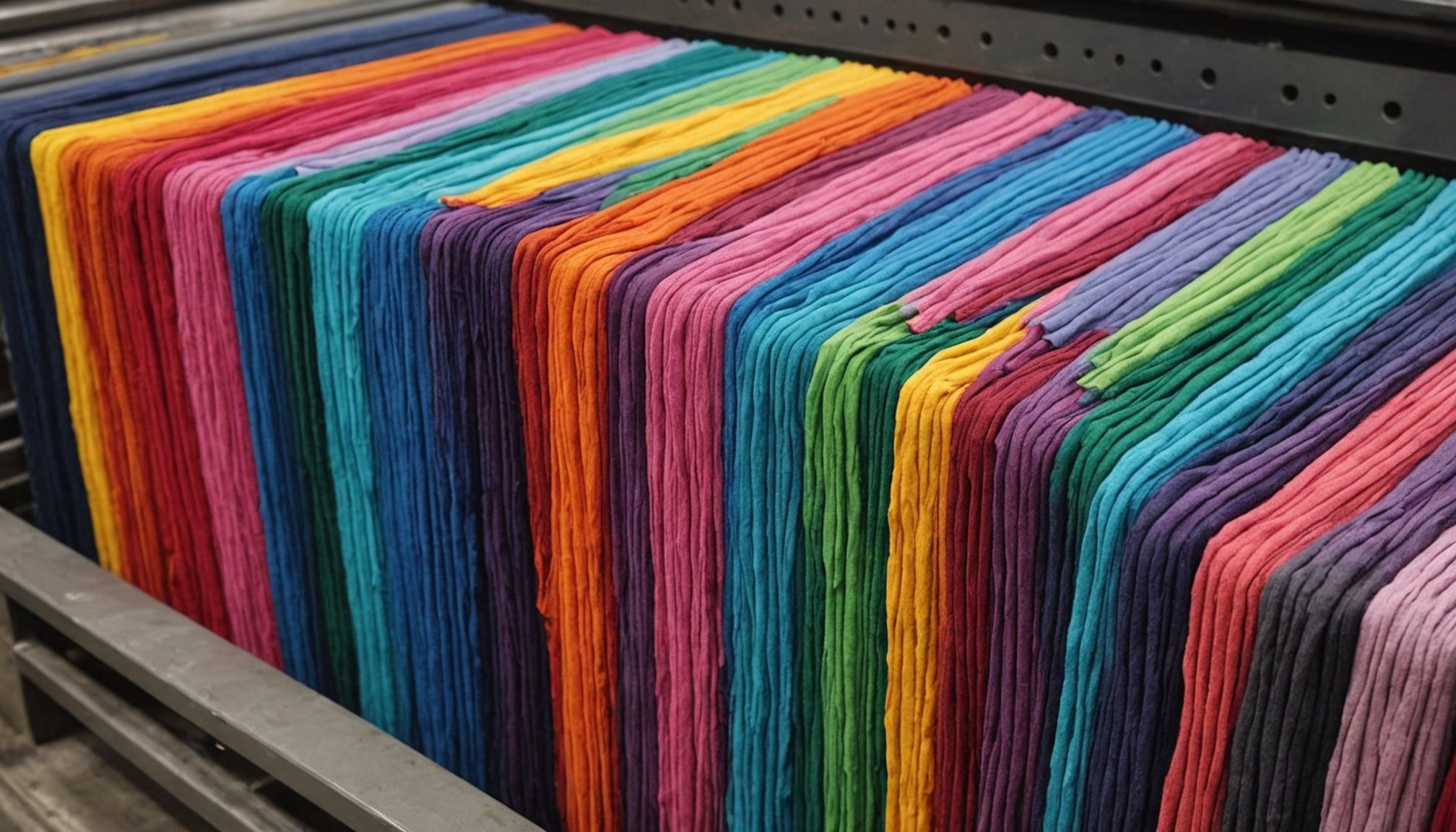Understanding Optimal Water Temperatures
Choosing the right water temperatures for colored fabrics is crucial to maintain vibrant colors and fabric integrity. Using the appropriate water temperature can prevent dullness and color bleeding. There are several temperature ranges to consider:
- Hot Water: Generally suitable for heavily soiled clothes, but it can cause color fading and fabric shrinkage when used on colored garments. It’s preferable to limit the use of hot water to whites or non-colorfast items.
- Warm Water: The middle ground that many recommend for washing colored fabrics. Warm water is effective at removing dirt without causing significant color loss. It provides a balance between cleaning power and fabric care, making it a popular choice for mixed loads.
- Cold Water: Best for maintaining color integrity, especially for brightly colored or delicate fabrics. Cold water washing can be gentler on colors and helps reduce energy consumption.
To achieve optimal results, identifying suitable temperature ranges for individual fabric types is key. Always refer to garment labels for manufacturer recommendations. Temperature plays a pivotal role in not just cleansing efficacy, but also in how maintaining vivid hues and extending the life of your favorite pieces.
Also to discover : Crafting the ideal exfoliation schedule for sensitive skin: discover how often is just right!
Tips for Sorting and Washing Colored Fabrics
Understanding sorting colored fabrics is crucial in maintaining their vibrancy and quality over time. Proper sorting can make a difference in preventing color transfer and preserving garments’ original hues.
Importance of Sorting Fabrics
Sorting is essential for color preservation as it prevents color bleeding between fabrics. By grouping similar colors together, you can avoid unwanted dye transfer. Clothing sorted correctly is less prone to damage.
Also to see : Proven strategies to reduce screen time and enhance eye wellness
Best Practices for Sorting
To effectively sort your colored fabrics, consider separating them into darks, brights, and pastels. Grouping similar color intensities helps maintain their integrity. Always sort by fabric type as well; denser fabrics can agitate delicate ones, causing wear.
Colorfastness Testing
Perform a colorfastness test before washing new or vibrant fabrics. To test, dampen a small area on a hidden section of the garment and blot with a white cloth. If color transfers to the cloth, wash the garment separately to prevent bleeding. This precaution helps keep your wash load safe from unintended discoloration.
These sorting techniques ensure that your colored fabrics remain vibrant while extending their lifespan. Implementing careful sorting habits can significantly reduce the risks of color loss and fabric damage.
Choosing the Right Laundry Detergents
Selecting the right detergents for colored fabrics is essential for preserving vibrancy and longevity. Detergents specifically formulated for colors offer gentler cleaning without dulling the fabric over time. By focusing on maintaining color integrity, these special formulations can prevent undesirable fading.
Avoid products that include bleach and harsh chemicals, as they can degrade fabric fibers and lead to color loss. For those who are environmentally conscious, several eco-friendly options can accommodate your needs. These detergents often use biodegradable ingredients and are free from phosphates and artificial dyes, providing a sustainable alternative to conventional products.
When choosing detergents, prioritise those with a neutral pH balance. This aspect is crucial in maintaining vivid colors as it minimizes chemical reactions that can deplete hues. You can also consider concentrated detergent options, which require less usage and can be cost-effective in the long run.
Reading labels can empower you when selecting the proper product. Look for phrases like “color preservation” or “suitable for colored fabrics” to ensure your choice aligns with your laundry goals. By understanding how these products impact your clothing, you can confidently make a choice that promotes lasting color protection.
Impacts of Temperature on Fabric Quality
Understanding temperature effects on fabrics is crucial for maintaining the quality of your garments. Different temperatures can impact the physical properties of fabrics, affecting their lifespan and appearance.
Physical Properties of Fabrics
Temperature changes can alter the fibres in clothing. High heat can cause shrinkage and distortion, while extreme cold might lead to reduced flexibility. Understanding how temperature interacts with fibre structure helps you choose appropriate water settings for washing.
Potential Risks from High Temperatures
Washing fabrics at high temperatures can lead to several risks. The most immediate concern is colour fading, as intense heat may strip dyes from fabric. Additionally, high temperatures can also weaken fibres, making them more prone to tearing and wearing out.
Benefits of Lower Temperature Washing
Lower temperatures, such as those in cold water settings, offer significant benefits. They help preserve the integrity and colour of fabrics, reducing the risk of shrinkage and fading. Cold water washing is also energy-efficient, contributing to a more sustainable laundry routine. By opting for lower temperatures, you can extend the life of your clothing while keeping vibrant colours intact.
Additional Care Tips for Preserving Colors
Adopting specific fabric care tips can prolong the vibrancy of colored garments. Awareness of how to manage the drying process is particularly critical. Overexposure to sunlight can cause colors to fade, so it’s advisable to dry colored fabrics in the shade or indoors. In situations where tumble drying is necessary, using a low heat setting can help maintain fabric integrity.
The correct use of fabric softeners can also enhance fabric longevity. These products can reduce friction during washing, minimizing the wear and tear that contributes to color loss. It’s important, however, to use them in moderation as overuse might leave residues, making fabrics less absorbent and potentially dulling colors.
Storage plays a crucial role in color preservation. Storing colored garments in a cool, dark place can prevent fading from light and fluctuating temperatures. Using breathable garment bags can protect them from dust and contaminants as well.
These practical steps collectively ensure that colored fabrics remain as vibrant as possible over time. By integrating these techniques into your routine, you offer your clothing the best chance of looking newer, longer. Taking proactive steps in fabric care will reward you with garments that defy the typical wear and aging process.
Visual Aids and Expert Insights
When it comes to laundry care visuals, incorporating a combination of charts and expert advice can significantly enhance your laundry routine for maintaining fabric colors.
Charts for Optimal Washing Temperatures
Using charts can effectively showcase the impact of water temperatures on fabric colors. They provide a quick reference for selecting the best temperatures suitable for different types of fabrics. A well-structured chart often includes:
- Hot Water: Effective for cleaning but prone to color fading.
- Warm Water: Balanced option for color preservation.
- Cold Water: Ideal for gentle cleans and preventing color loss.
Expert Tips from Textile Care Professionals
Industry professionals recommend best practices that are simple yet powerful. For instance, consistently using cold water for delicate fabrics can greatly extend their lifespan. Experts also stress the importance of checking garment labels and heeding care instructions for optimal results.
Common Mistakes to Avoid
To prevent fading colors, it’s critical to dodge frequent laundry mistakes. Avoid using random water settings; always tailor settings to your fabric’s needs. Skipping label instructions is another common error that can lead to damage. Awareness and adherence to garment-specific care are key to maintaining vibrant hues.











